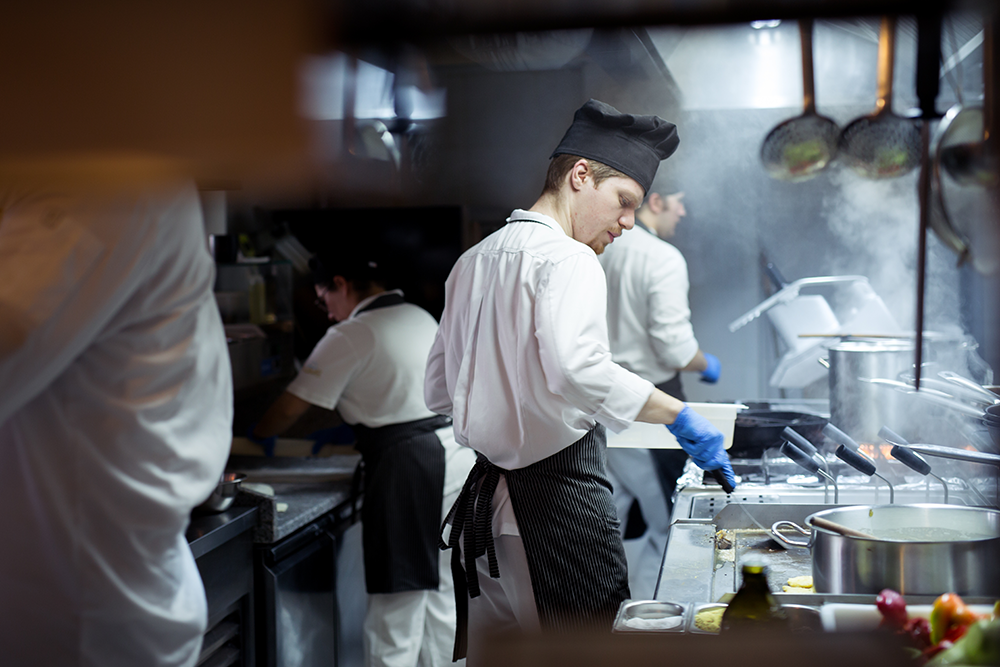By Elisa Abott, Contributor
Hiring foreign nationals and immigrants in your restaurant can have many benefits. After all, nothing compares to an ethnic cuisine restaurant where the cook is actually from the country of origin and knows all the fascinating secrets and intricacies of the plates. At the same time, hiring foreign cooks and waiters also gives you access to a bigger pool of candidates, so that your restaurant is never understaffed.
On a global level, the restaurant industry relies heavily on foreign workers. For example, in the UK more than half of restaurant workers are from overseas, while in the US one in four foodservice employees speaks a foreign language. The challenge here is that communication barriers can quickly appear when working with non-natives. These barriers can have an impact on everything from health & safety to productivity and guest satisfaction.
Diversity is a key word of the modern workplace and, as the restaurant manager, you have to overcome the language barriers and cultural differences to create a friendly and productive environment.
Here are a few ways you can do that depending on where barriers occur.
Language Barriers Between Your Restaurant’s Staff
Good communication between employees plays a major role in boosting workplace productivity and building trust. But when cooks and waiters speak different languages, maintaining good communication can be hard.
Use code words and abbreviations. If you want to help employees understand each other, it’s important to keep things very, very simple. Until non-native employees grasp the terminology, use code words and abbreviations to describe more complicated terms.
For example, you can assign numbers to menu items so that they don’t mistake orders, and you can think of simpler alternatives for common restaurant terms. This is a good time to teach workers restaurant slang, such as “reso” instead of “reservation”, “comp” instead of “on the house”, or “86” instead of “out of stock.” Most of the time, slang is easier to remember.
Use an interpreter. If there is someone in the restaurant who can speak both languages, at least on a basic level, ask them if they can help as interpreters for a while. Obviously, they will not turn this into a full-time job and you have to make sure that occasionally helping out with translation will not interfere with their regular responsibilities within the restaurant.
Language Barriers Between Restaurant Managers & Kitchen Staff
Apart from the way employees communicate between each other, the way you and your managers communicate with employees is also important. A language barrier can prevent you from sharing feedback and instructions, so use these tricks to streamline communication:
Use short videos & other visual methods of communication. If something is too complicated to explain verbally, then show, don’t tell. Use picture charts and short instructional videos to convey your message and -- if you want to make sure your feedback is understood perfectly, then simply show the cook what needs to be done.
Translate the restaurant guidelines into their native tongue. To avoid explaining the same things over and over whenever you hire a foreign employee, you can streamline communication by writing down some basic restaurant guidelines and translating them into the necessary language. Services such as PickWriters will help you make sure you choose the best translation company that provides 100% human translation and not the mess that sometimes comes out of Google Translate.
Use simple words when writing food safety educational materials. Instructional materials should be easy to understand, so aim for high readability, preferably sixth-grade reading level. Even a highly skilled and experienced chef can make mistakes if they don’t understand exactly what they need to do, so use only everyday language, without specialized terms. To facilitate understanding, choose a large font and use pictures in your educational materials.
Language Barriers Between the Restaurant Guests & Servers
If you or other employees may be patient and understanding with non-native staff, guests aren’t always that friendly. When a customer doesn’t receive exactly what they asked or can’t make themselves understood to the waiter, this can affect their experience and even make them leave a bad review.
Invest in training. Although it requires an investment, language training is the best long-term solution for bridging the communication gap. Apart from streamlining communication, language classes also boost loyalty because they show employees you’re willing to invest in their education and training.
Make sure there’s always a supervisor around to bridge the communication gap. Sometimes, guests may use a word or phrase that the waiter hasn’t learned yet, and in that case, it’s best to have a supervisor around to clarify things.
Print an English menu with pictures. This tip applies especially to restaurant owners in touristic areas, which get a lot of transit from foreign customers who may struggle with the language themselves. In these cases, you should make sure you print two versions on the menu -- one in your native language and one in English. Photos of every item on the menu are also helpful if you want to avoid confusion or complaints.
Developing Your Staff’s Cultural & Language Competence
You can use many short-term tips and hacks to lift the language barrier and clear misunderstandings between staff, management, and restaurant guests, but to boost productivity, you should aim for long-term solutions. A foreign employee can be a valuable asset for your restaurant and investing in their language training really pays off. If that staff member will work for you for years, the language classes aren’t useful just for them, but to your business as well because they will become more efficient and more productive.
While bridging the communication gap, you should also consider boosting that employee’s cultural competence. Some of the biggest cultural differences between countries are found in eating habits, so you want to make sure employees work and communicate in a way that is culturally appropriate.
About the Author:
A fresh graduate in Computer Science, Elisa Abott is interested in the latest news in the tech world and how tech and business influence each other. Passionate about sharing her knowledge with others, Elisa is also an active blogger and collaborates with tech and business online magazines.















